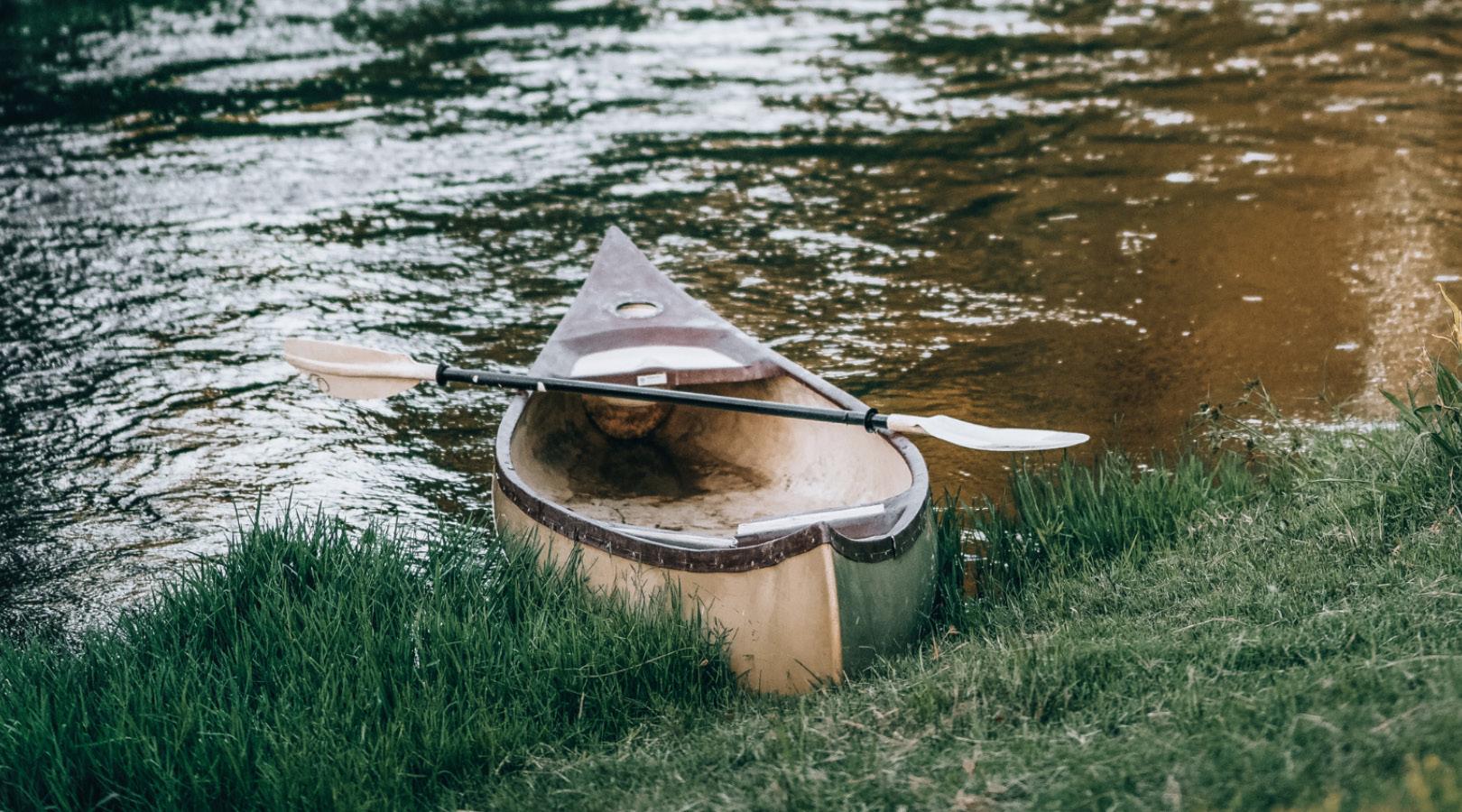SoundBites
Beneath the Waves: Recovering Lobster Traps
A Persistent Threat and the Push for Change
Legal Battle for Environmental Justice and Wetlands
Climate Action Week
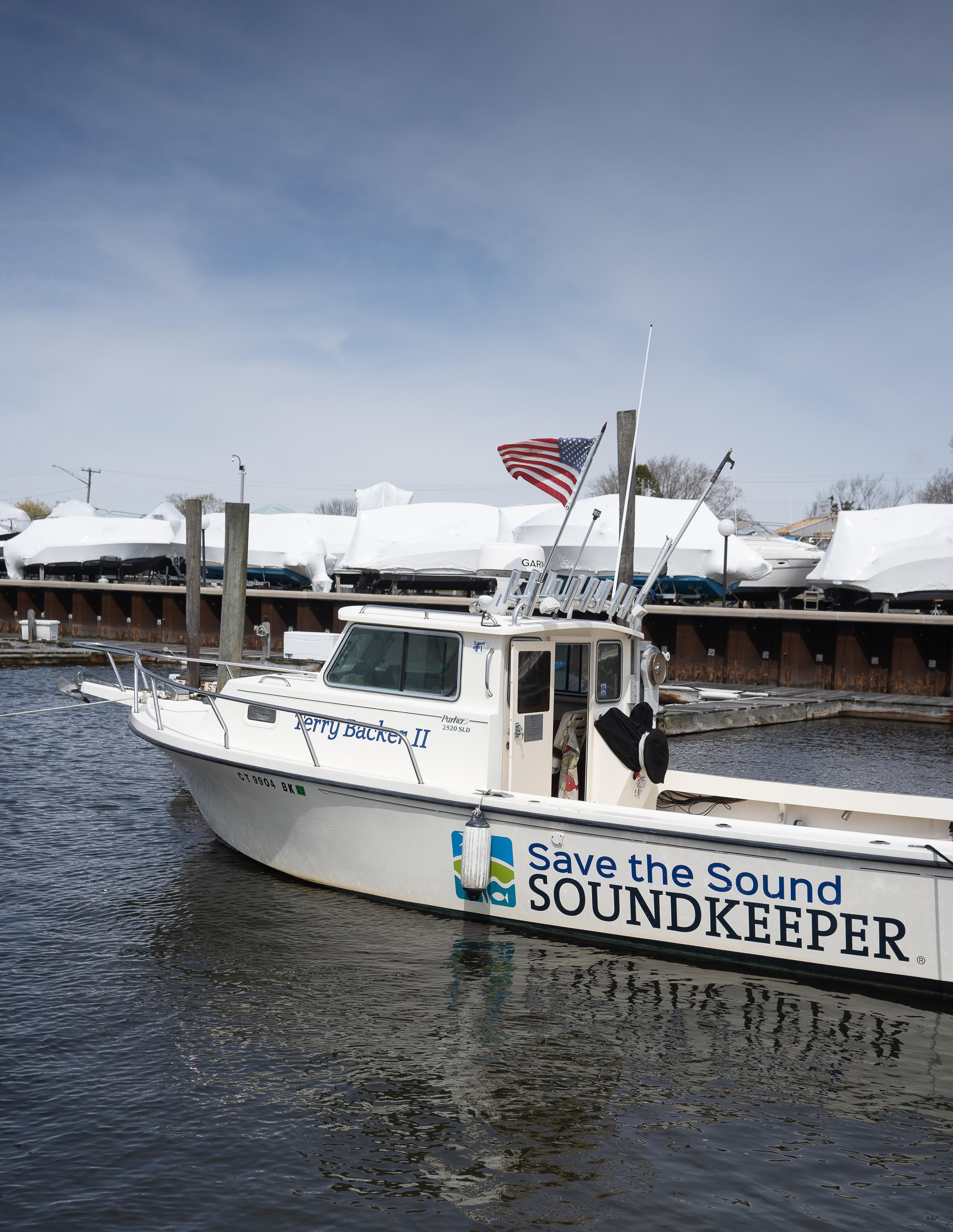


Beneath the Waves: Recovering Lobster Traps
A Persistent Threat and the Push for Change
Legal Battle for Environmental Justice and Wetlands
Climate Action Week


Warm weather is here, and water sports, humming insects, and lush greenery are back in full force. The preciousness of water is palpable after a day outside leaves us sticky, salty, and sun-kissed, craving an ice-cold glass of water or a cooling dip in the Sound. Can you imagine this season without clean water?
Supporting clean water initiatives around the Sound is one of our urgent priorities. We are approaching the summer season when hypoxia, a condition where water has very low oxygen levels, often occurs. This, along with excess nitrogen, leads to “dead zones” where fish cannot survive. For more than five decades, we’ve made strides in reducing excess nitrogen by enforcing the Clean Water Act, acting as the Sound’s watchdog for illegal sewage dumping, and helping to get policies passed that reduce stormwater runoff. This spring saw exciting momentum for cleaner water when the New York State legislature passed, and Governor Kathy Hochul quickly signed, the Suffolk County Water Restoration Act. This law can help the County address decades-long nitrogen issues harming both drinking water and the Sound.
As of this writing we expect the Suffolk County Legislature to add a referendum to their November ballot, giving voters a voice in their clean water future!
After this milestone, the County must begin expanding sewer coverage, upgrading its 380,000 faulty septic systems, and securing additional state and federal funding for this essential initiative. We will harness this momentum to keep pushing this important work forward.
We’re grateful for your partnership with us in assuring we can all benefit from healthier waters each season. I’ll be thinking about our joint clean-water successes when I take my son to the Sound’s beaches or launch my kayak to explore some of my favorite inlets. I hope you make time to enjoy all our region has to offer too, whether on the Sound, in the rivers that feed it, or exploring the forest lands that purify it!


Leah Lopez Schmalz President, Save the Sound
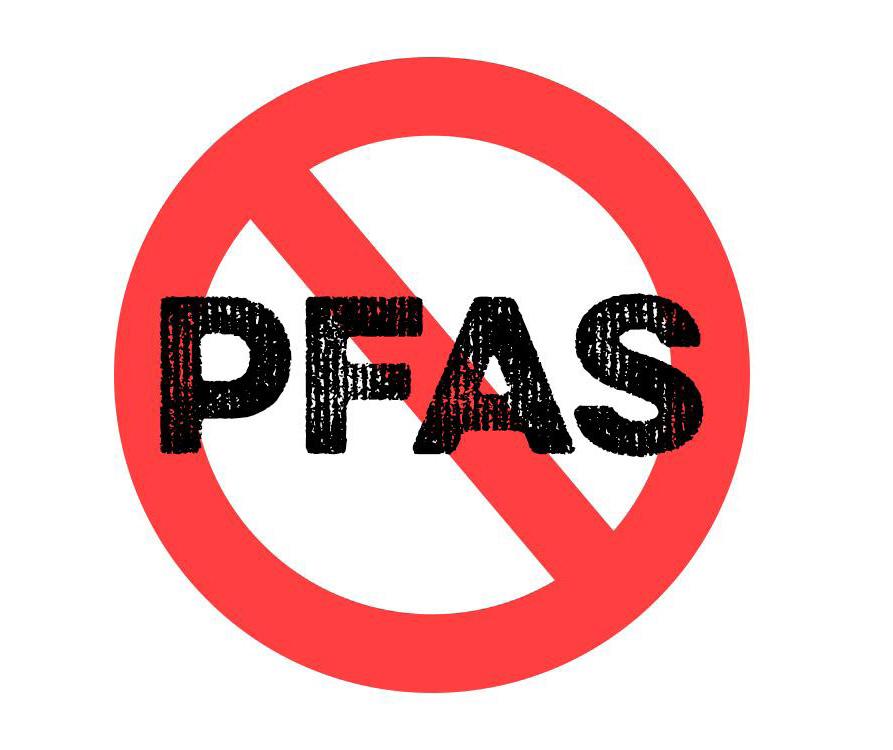
They were designed to make our everyday lives easier, to keep our omelettes from sticking to the frying pan and protect our couches, carpets, and clothing from bothersome stains. Instead, per- and polyfluoroalkyl substances (PFAS) are leaving an indelible imprint on our world. PFAS are called “forever chemicals” for a reason. They not only fail to break down naturally (biopersistant), but they also build up over time (bioaccumulative). As a result, an estimated 98% of Americans have been exposed to PFAS, which are linked to a range of negative health impacts, including prostate, kidney, and testicular cancers, reduced immunity, decreased fertility, and high cholesterol. They pass into our environment through our toilets, showers, sinks, and washing machines, causing compounding damage to ecological health. That’s some price to pay to make rain slickers slicker.
Fortunately, progress was made this spring, with legislative and regulatory efforts to keep PFAS from getting into our lives in the first place. In April, the EPA established the first national drinking water standards for PFAS, noting that any level of exposure carries a health risk.
In early May, our Long Island Soundkeeper Bill Lucey worked with a coalition to pass a vital bill through the Connecticut Legislature. Modeled after laws pioneered in other states, this law will ban the addition of PFAS to several consumer product categories starting on Jan. 1, 2028, such as apparel, carpets or rugs, cleaning products, cookware, cosmetics, dental floss, fabric treatments, children’s products, menstrual products, textile furnishing, and ski wax.
“Throughout New England, we’re starting to get a handle on PFAS pollution,” says Bill.
In New York, bills were introduced to ban PFAS in individual product categories, but David Ansel, our vice president of water protection, pushed for a comprehensive bill to include most of the same categories identified by Connecticut, plus upholstered furniture. It passed the New York Senate but was not called for a vote in the Assembly, a devastating missed opportunity. We’ll keep pushing on this critical issue.

Phase One of the Hutchinson River Watershed Plan is complete and now provides a framework for protecting and improving water quality in the Westchester County portion of the Hutchinson River.
Save the Sound partnered with the Westchester Soil and Water Conservation District for this three-year project, and community members participated in public meetings; project information sessions; and stream walks, where they moved through the river in waders, directly observing site conditions. The plan was driven by these stakeholders’ desired environmental improvements for the river.
The Plan incorporates those shared goals, including addressing pollution and riverbank erosion, increasing river accessibility, and improving water quality.
“Water quality is something community members kept coming back to. In a heavily developed watershed like the Hutchinson River, stormwater runoff is a major concern.”
- Nicole Davis, watersheds project manager
Phase One covers the Westchester County portion of the Hutchinson River Watershed and will serve as a model for moving forward with the second phase, which focuses on the Bronx portion of the watershed. Together, the plan will encompass the full watershed, from its headwaters in Scarsdale to where the river meets Eastchester Bay before entering Long Island Sound.
“We spent the last year and a half talking about the watershed, its features, its assets, its problems, and thinking about projects and solutions with stakeholders from all over the watershed,” says Nicole. “Now we start implementing those projects.”
The Tweed New Haven Airport’s proposed expansion will significantly impact wetlands, impact air and water quality and increase flood risks, posing significant health and environmental issues. Save the Sound’s legal team is ensuring these environmental impacts are thoroughly studied and addressed in our federal court appeal: Save the Sound v. FAA, No. 24—10288 (D.C. Cir. 2024).
Under the National Environmental Policy Act, major projects like this must undergo an environmental review process. The Environmental Assessment (EA) identifies if a project may cause significant environmental impacts. If so, a detailed Environmental Impact Statement is necessary.
Our action is an appeal of a decision by the Federal Aviation Administration (FAA) that we believe wrongfully concluded that the expansion of the airport would have no significant environmental impacts.
We argue that the EA accepted by the FAA was totally inadequate because it failed to consider increased flights due to the demand induced by the expanded runway and the true impacts of the expansion
impacts, making a more comprehensive Environmental Impact Statement necessary to protect the rights of surrounding communities and environments.
We expect to exchange briefs in the coming months. Meanwhile, given the federal environmental review failures, we will be fighting to ensure that state and local agencies perform their own thorough reviews

Throughout the winter, stacks of lobster pots spread into a skyline of towers, a small city of rectangular cages—hundreds of them, piled three or four high—in an empty lot beside Captain’s Cove Marina in Bridgeport, CT. Each wire mesh building block had been exhumed, one at a time, from the floor of Long Island Sound.
Many of them had been down there for decades, silted ruins of a region’s oncethriving lobster industry, which cratered after the 1999 season. They would have remained there, ghost fishing—indiscriminately catching fish and shellfish, which immediately became bait for the next victims—waiting to be reclaimed by fishermen who would not return, until the traps were fully entombed in the muddy bottom or rusted open on the reefs. Or until they were recovered by the organizations working on the Lobster Trap Retrieval and Assessment Partnership (LTRAP): Save the Sound, the Maritime Aquarium of Norwalk, Project Oceanology, Remote Ecologist, and Cornell Cooperative Extension (CCE) of Suffolk County.
10 10 N 0 5 Miles Kilometers
By the end of 2023, the LTRAP partners had removed more than 1,100 traps from the waters off Connecticut; many more have been collected by CCE on the New York side. None of those formerly lost and abandoned pots could have been hauled in without the expertise and experience of
another group of integral partners: the local commercial fishing fleet.
“We would be wandering aimlessly without our group of dedicated Long Island Sound harvesters. The few captains and crew left are helping clean up everybody else’s leftovers.” - Bill Lucey, Long Island Soundkeeper
When the lobster industry collapsed, many fishermen disappeared with it. Some took their boats to fish elsewhere. Many sold their boats—and the already-deployed lobster pots associated with them—and sought a new, perhaps more forgiving livelihood. Several have died since the heyday of lobstering. Tens of thousands of traps were abandoned on the floor of the Sound.
The fishermen who remained were forced to adjust, targeting other species. What they have retained over the past 25 years is local ecological knowledge that is vital to the success of the LTRAP campaign. Each LTRAP partner targets a general geographic area (Save the Sound covers the central Sound, from around Bridgeport to Clinton) and contracts local fishing boat captains to work in the grounds they are familiar with. The captains provide not only a boat equipped to extract these 30-pound pots but essential memories from productive fishing days past.
“They’re the only people left on Long Island Sound familiar with the old territorial system,” says Bill. “They know where the now-absent fishermen used to set their traps, so they know where they can drag their grapples and where they’re likely to snag on something.”
Such obstacles are not merely relics of a bygone fishery. They remain annoyances and hazards for anyone on the water today. These traps, and the lines many are attached to, can catch the gear of sport fishermen drifting for porgy or sea bass or snare a boat’s anchor, dropped unsuspectingly where ghost traps lurk deep below the surface.
“A lot of the fishermen are excited that this project is helping clean up their fishing grounds,” says Jon Vander Werff, our fish biologist, who, along with our Fisheries Technician Nico Acuna Perales, goes out on weekly trap-pulling trips. “We’re hoping to create large trap-free areas where people can fish without the risk of getting tangled.”
The trap cleanups don’t end at the Sound shore. This spring, more than 450 traps stacked at Captain’s Cove were carted off for recycling by a local scrap metal company. Now, with the help and insight of the local commercial fishing fleet, we’re working to refill that yard again with towers of traps until we get them all.

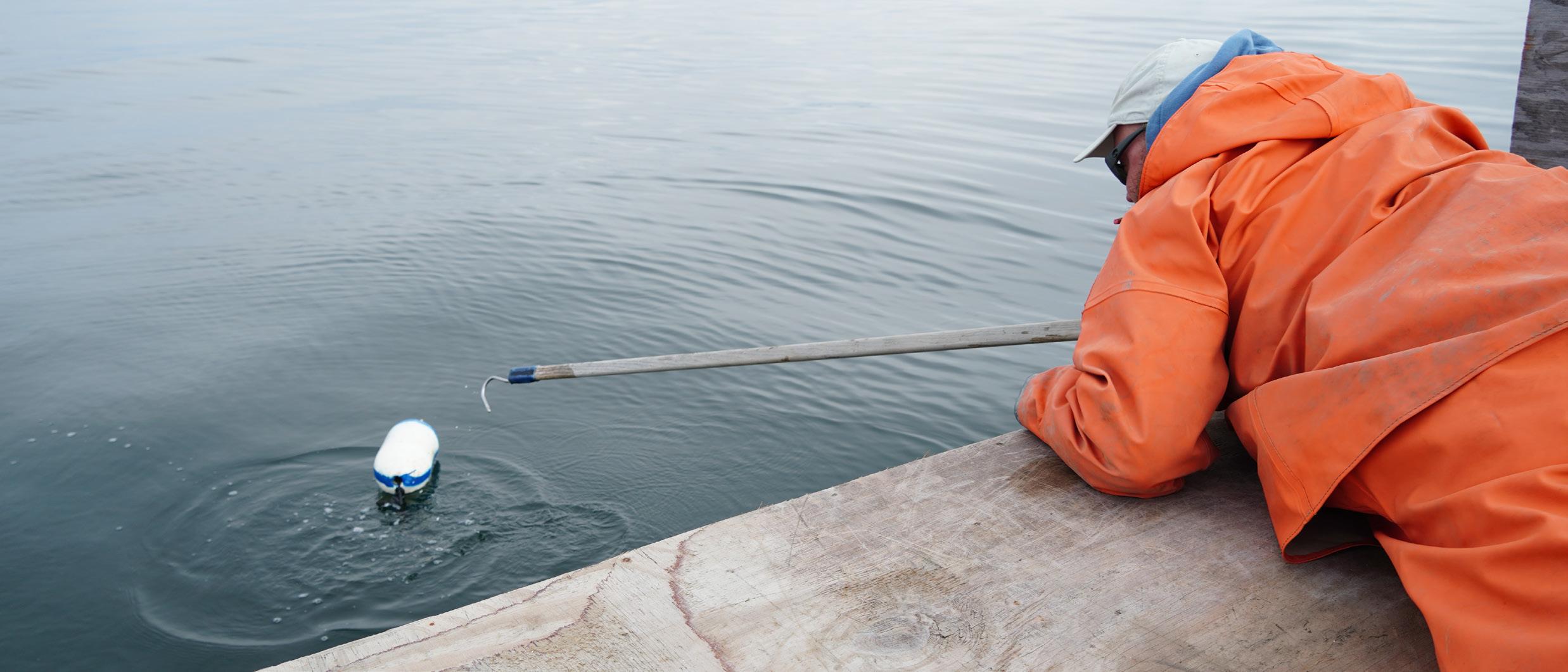
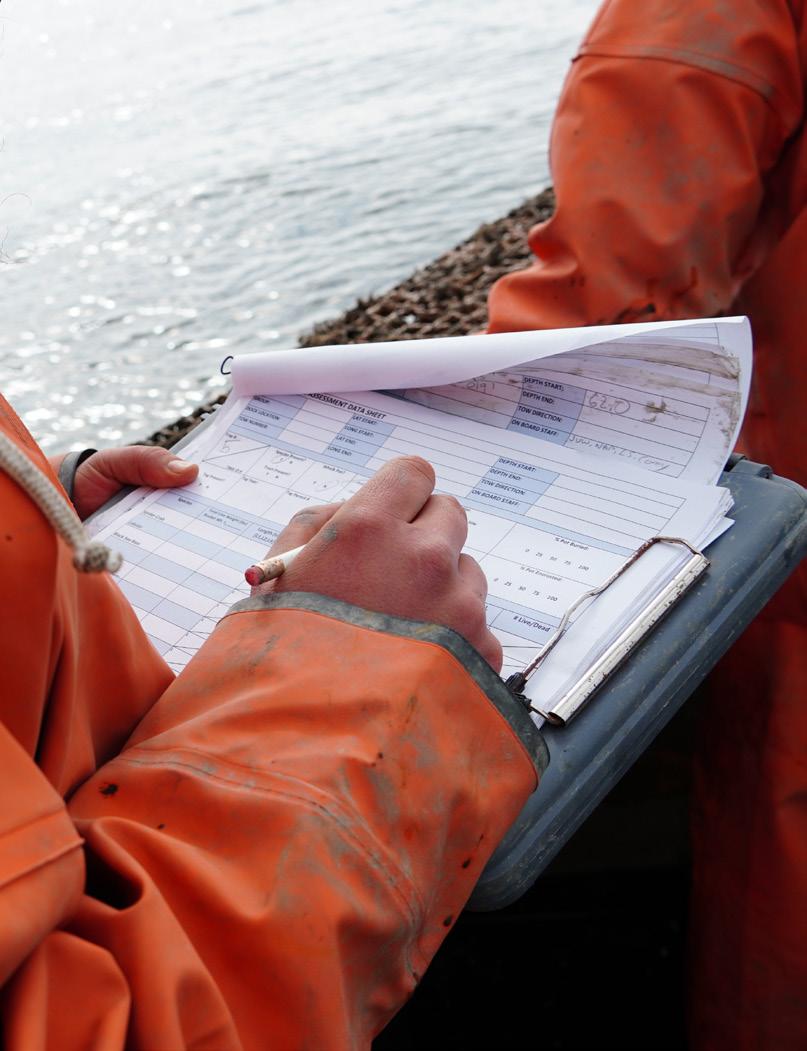

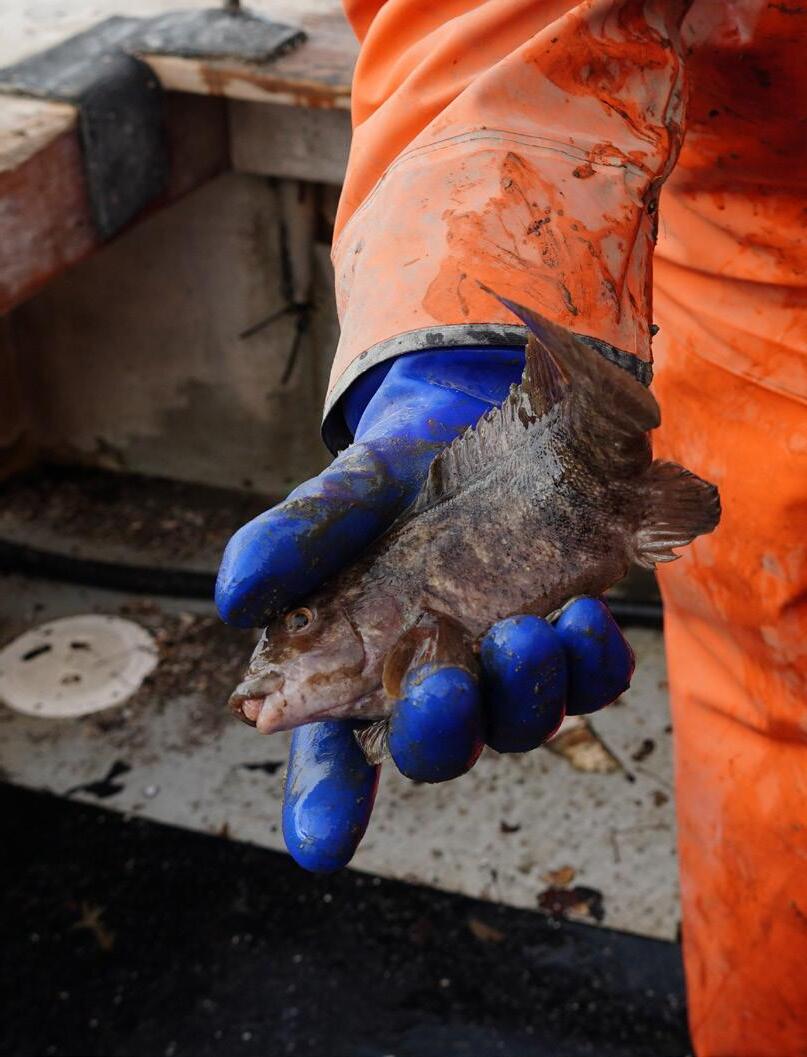
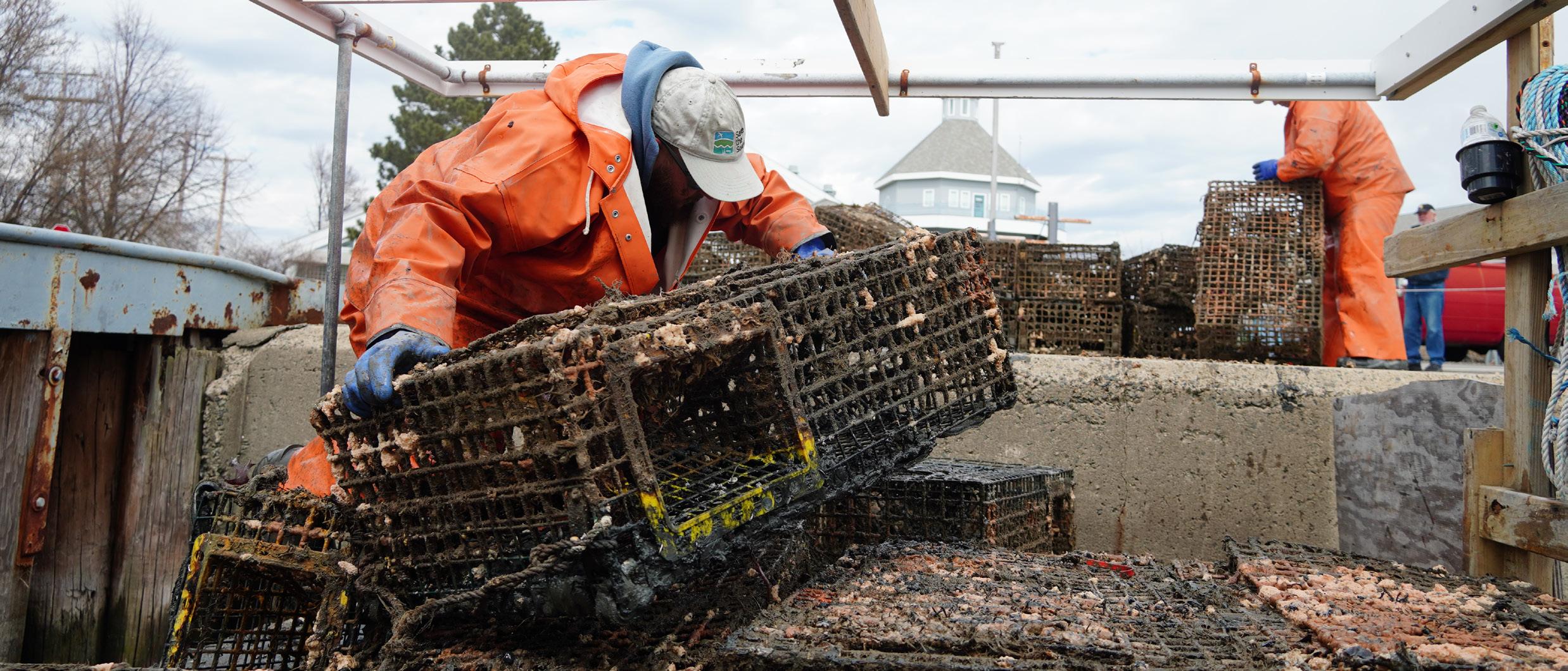 A juvenile tautog freed from a lobster trap.
A juvenile tautog freed from a lobster trap.
Connecticut has more than 5,000 dams—the most per river mile in the country. Dams that once served purposes like providing local water supply and mechanical power are now mostly defunct, causing a string of consequences that impact wildlife and humans alike. These range from preventing fish from moving up the river to spawn to breaches that can lead to serious flooding.
How do we address the Long Island Sound region’s need for free-flowing rivers? The River Restoration Network (RRN), a partnership of eight New York- and Connecticut-based organizations, including American Rivers, Connecticut River Conservancy, Farmington River Watershed Association, Housatonic Valley Association, The Nature Conservancy, Save the Sound, Seatuck, and Trout Unlimited, is dedicated to the restoration and health of the region’s rivers.
Since 2022, the RRN has been working diligently and collaboratively to raise awareness around the critical work of stream barrier removal. The goal? To accelerate and streamline dam removal and culvert replacement, create and share educational materials, and prioritize community outreach.
This year, the RRN convened over 20 agencies and funders to discuss the biggest obstacles to dam removal, released a Dam Removal Report that highlights the benefits of removing dams, and produced a short documentary film in collaboration with Reel Quest Films, Reconnected: Restoring the Rivers of Long Island Sound, which features interviews from community members, environmental experts, and river advocates.
The documentary, which showcases the connections between people and the rivers they love, features interviews with several RRN members, including Megan Lung (pictured right), our New York ecological restoration project manager.



“I think about how special Lake Michigan is to me, and I want to help others form that connection with their rivers,” says Megan, who developed a love of ecology through visits to Northern Michigan. “The core of my work is to speak on behalf of water and its inhabitants, and humans are included in that inhabitant category.”
The benefits of dam removal are not always clear at first glance, which is why accessible materials such as the Dam Removal Report and Reconnected are so important. One benefit of dam removal is to increase green and blue spaces in areas where these spaces may be limited. “Rivers reach a lot of people, but a lot of people can’t access the river in ways they would like to,” says Megan.
One example of this is the Kinneytown Dam Removal Project, where Save the Sound is working with Naugatuck Valley Council of Governments to apply for funding to create a greenway trail along the Naugatuck River, to be designed with community input post dam removal. The river, now inaccessible to many nearby residents, has great potential to become a recreational area. Projects like Kinneytown exemplify what collaboration among the RRN can look like.
“I think it’s rare to be able to present a project as an idea, share that idea with a group of colleagues, and get several pathways to implementation,” Megan says, reflecting on what it’s like to be part of the RRN. “The level of expertise we can draw from one another is what makes the network so exciting for me.”
A roundtable discussion taking place at the Long Island Sound River Restoration Network (RRN) Agencies and Funders Convening earlier this year in Purchase, NY.Save the Sound and our CT Coalition for Climate Action affiliates declared April 22–29 as Climate Action Week 2024 to inspire action on the coalition’s 2024 climate agenda. Throughout the week, we held events that sparked wide participation, from a youth advocacy day press conference to a coffee conversation with State Representative Eleni Kavros DeGraw.
The first event was Youth Advocacy Day, which was organized by Sunrise Movement Connecticut. This event provided a platform for high school and college students to learn Sunrise’s history and how to engage in the legislative process, and it allowed them to interact directly with policymakers. Empowering youth to navigate the complexities of policymaking helps lay the groundwork for future leaders in the environmental movement. As part of the day’s activities, Sunrise held an Earth Day press conference with local youth and the CT Coalition for Climate Action to ask lawmakers for action in support of HB 5004, also known as the Connecticut Climate Protection Act, in addition to section 7 of HB 5213, which supports free bus passes for students. Speakers also voiced opposition to “Project Maple,” a proposal that would expand the capacity of the Algonquin Gas Transmission Line.
Following Youth Advocacy Day, our coalition held a Social Media Day of Action, and after that, a student poster contest. The poster contest provided a platform for middle school students to creatively express their concerns about climate change and their natural environment. The captivating artwork
showcased in the Capitol lobby was a powerful reminder of the interconnectedness between art and activism amongst any age. If we continue to harness the creative talents of youths, they will amplify the message of climate action and inspire broader community engagement.
Fifty posters were submitted to the contest, and judged by a committee of environmental leaders, legislators, and others, who selected a shortlist of 10 posters to be displayed at the Capitol. Participants were scored on topic, aesthetics, content, and presentation of information. Following the celebration, 12 of the top posters will be put together into a calendar that will be distributed to legislators next session, and available for download to highlight climate issues being studied throughout the state.
Attendees of the event voted for three finalists, and Representative Christine Palm announced the winners. The first-place winner, Maddie M., attends Long River Middle School. Second place went to Alexis M. from Enfield High School, and third place was Elyas M. from Ellen P. Hubbell Elementary School.
Youth involvement in civic engagement is essential to the environmental movement’s success. By investing in the development of youth leaders and providing platforms for their voices to be heard, we ensure a more inclusive and sustainable approach to advocacy. As caretakers of the planet, we must guide the next generation of climate champions and empower them to drive the change we desperately need.

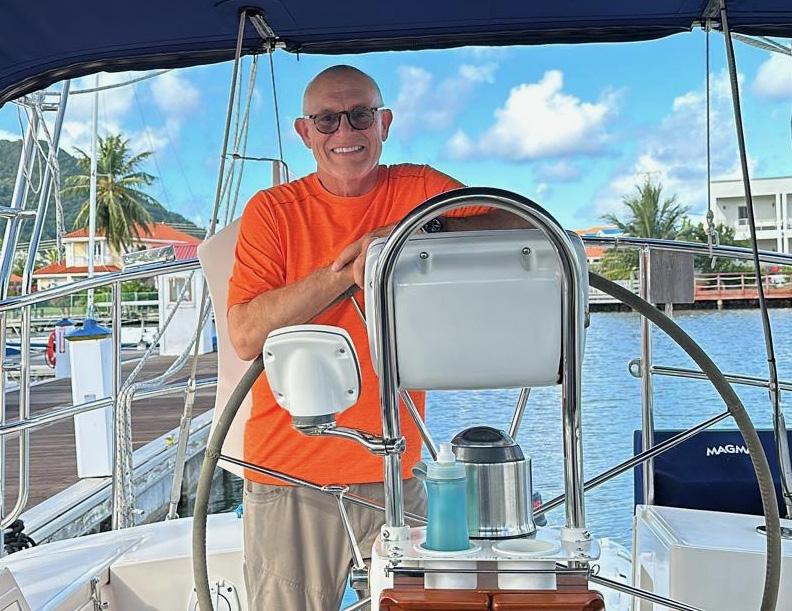
As a lifelong sailor, yacht broker, and former board member of Buffalo Niagara Riverkeeper (now Buffalo Niagara Waterkeeper), John Farmelo has a deep connection to water. Residing near Stonington Harbor, he has made the health of these waters and ecosystems a personal priority.
John’s association with Save the Sound began many years ago and has recently grown stronger as his dedication to environmental protection has deepened. “In recent years, my commitment to safeguarding the Sound has intensified,” John shares. “Save the Sound impresses me with its commitment, purposefulness, and effectiveness—attributes not always found in organizations.”
Becoming a Green Guardian was an easy decision for John. “I recognize the importance of supporting organizations that achieve meaningful outcomes. Supporting Save the Sound is important to me because of the critical role they play in the environmental health of our region,” he explains.
For those seeking to support environmental causes, John’s advice is simple: “Just do it. Start somewhere, no matter how small it may seem—attend a cleanup, participate in a public meeting, and get involved. You’ll be glad, and proud, that you did.”
We are grateful for John’s trust in our mission and his dedication to preserving the waters we cherish.


